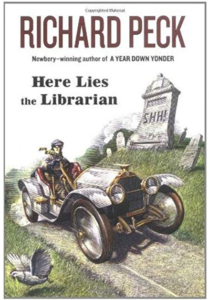 This is a wonderful, funny story about 4 young women transitioning from college to making their own space in the world, mixed up with the growing phenomenon of the motor car, 2 mechanics with dreams of taking on the world, and all at the beginning of the quickly changing 20th century. As for the 21st century…
This is a wonderful, funny story about 4 young women transitioning from college to making their own space in the world, mixed up with the growing phenomenon of the motor car, 2 mechanics with dreams of taking on the world, and all at the beginning of the quickly changing 20th century. As for the 21st century…


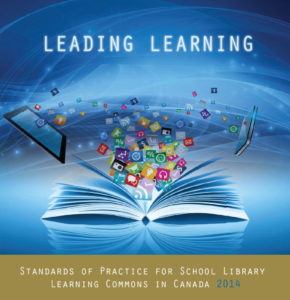 Here is the link to the Standards of Practice For School Library Learning Commons in Canada document:
Here is the link to the Standards of Practice For School Library Learning Commons in Canada document:
http://llsop.canadianschoollibraries.ca/
It is perodically updated so check the site. Below is a condensed version:
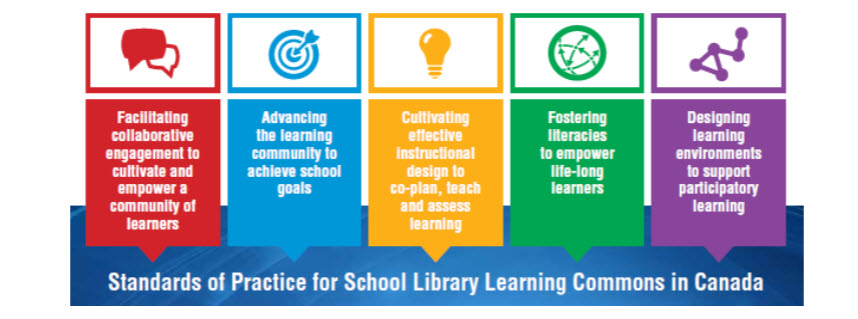

If it’s the librarian that makes the difference, what are some of the qualities and practices of an exemplary teacher-librarian? Here’s my view:
My Crayons or Yours?
As we strive to become exemplary teacher librarians, we need to consider and make choices. No matter our strengths, challenges, talents, and beliefs, we begin by choosing to connect emotionally with our students. This will require vulnerability and openness on our parts but is powerful for learning.
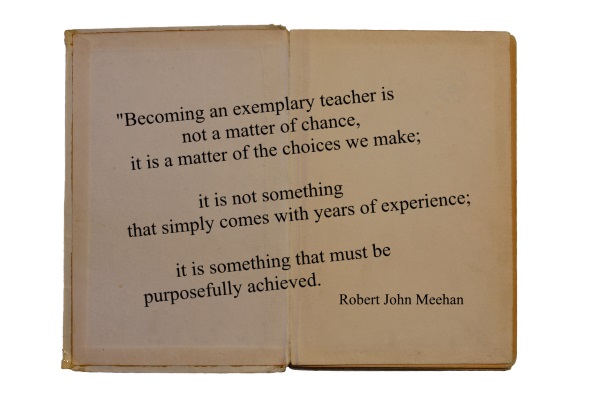 In the Journal of Leadership Education, (Dec 2007), we read, “Engaging students emotionally is the key to strengthening their dispositions toward critical thinking.” (Identification of Relationships between Emotional Intelligence Skill & Critical Thinking Disposition in Undergraduate Leadership Students.) A report from the University of Chicago states, “Decades of research reveal that a supportive environment that fosters trust between teachers and their students is essential in establishing a supportive learning environment for students and, ultimately, improving our schools.” (Fostering Student-Teacher Trust, University of Chicago, Urban Education Institute, Dec 2017)
In the Journal of Leadership Education, (Dec 2007), we read, “Engaging students emotionally is the key to strengthening their dispositions toward critical thinking.” (Identification of Relationships between Emotional Intelligence Skill & Critical Thinking Disposition in Undergraduate Leadership Students.) A report from the University of Chicago states, “Decades of research reveal that a supportive environment that fosters trust between teachers and their students is essential in establishing a supportive learning environment for students and, ultimately, improving our schools.” (Fostering Student-Teacher Trust, University of Chicago, Urban Education Institute, Dec 2017)
This element of trust or lack of is so crucial it is now known as The Trust Gap in major studies on influencing consumer behavior as well as in schools. (Jeff Kagan, The Growing Customer Trust Gap, Sept 2016) Whether we like to admit it or not, we are all consumers of information and must develop the skills to examine and think critically about what we are learning.
Information goes through our personal filters of values and beliefs. In their article, The Paradox of Our Profession, Anne Martin and Suzanna Panter, (Eric Institute of Education Sciences, Mar-Apr 2015) discuss five core values for exemplary teacher librarians:
Value I: School librarians create sanctuaries for our students.
The library is a caring, belonging space, different from others in the school; a haven where students can be themselves as people. One of the most straightforward ways to do this is by honoring their choices and helping find books a particular student enjoys.
Value 2: The school librarian is a collaborator and instructional partner.
We are part of the school staff, colleagues with the other teachers in the school. We have the unique position of being able to see the puzzle as a whole, how the pieces from different grades and levels fit together and connect and we need to bring this perspective to collaborative activities.
Value 3: School librarians prepare students for lifelong learning.
As we share stories with our students and help them read and make sense of various types of information, we help them write their own life stories. School is just a chapter in their lives but to add to Martin and Panter’s words, “When we open books, we open eyes,” we also open minds and hearts.
Value 4: School librarians protect students’ right to information.
As we question censorship, we are also supporting the value of democratic access to information for all.
Value 5: School librarians know advocacy is essential to library program growth.
Martin and Panter call teacher librarians “relentless” in the effort to “remain relevant.” Unfortunately, it does seem to require constant struggle on our part to explain who we are, what we do, and why we need funding and support.
This personal answer to the question of being an “exemplary instructional partner” began with the foundation of connecting emotionally to students and continued with exploring key values. Even though this will no doubt be a question with an evolving answer, basing teacher-librarian practices on values leads into creating “opportunities for students to develop their personal core beliefs and passions, and then share them positively with the world.” (Martin and Panter, 2015)
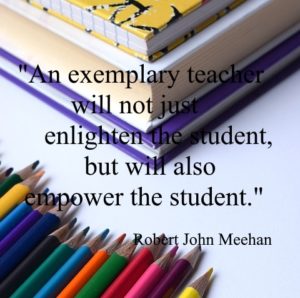
A helpful comparison is to think of information as ‘the black and white’ which we then color for ourselves with the crayons of values. How do you color your picture of an “exemplary instructional partner?”
